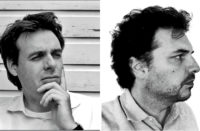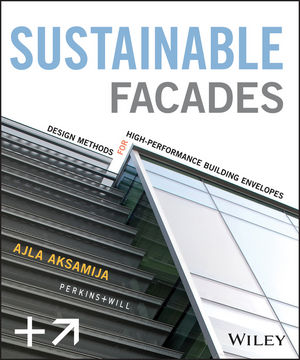The conjunction this season of four architecture exhibitions on Midcentury Modernism at its most promising and exuberant seems less a coincidence of timing than proof of a new attitude, telling us much about the present even while illuminating the past. This transcontinental grand slam began in New York in June with Buckminster Fuller: Starting with the Universe, at the Whitney Museum of American Art (through September 21); continued in July with Between Heaven and Earth: The Architecture of John Lautner, at Los Angeles’s Hammer Museum (through October 12), and Home Delivery: Fabricating the Modern Dwelling, at the Museum of Modern Art in New York (through October 20); and wraps up in the fall with Eero Saarinen: Shaping the Future, at Minneapolis’s Institute of Art and the Walker Art Center (September 13–January 4, 2009).


Museums often follow trends in academe, where graduate students constantly seek fresh research topics unmined by earlier scholars. At some magic moment the recent past morphs into history, a transition that never ceases to shock those who lived through events under study. Veterans of ages past often find it hard to admit that divergent memories held by others — the Rashomon effect — might be equally valid.
A presumed benefit of younger, unbiased scholars rediscovering rather than revisiting history is their ability to assess facts without preconceptions. However, as is likewise true of all revivalist design — and Classicism in particular — striving for absolute period fidelity will not efface the telltale imprint of the present on such enterprises.
Interestingly, all four current shows focus on aspects of late Modernism far juicier than the late International Style in its tapped-out corporate phase, the easy target chosen by Postmodern revisionists three decades ago. Whether or not you like the eye-filling, high-flying postwar designs now being presented in museums from coast to coast, these dynamic schemes are far from the cliché glass-and-steel-box piñata whacked by Tom Wolfe and his fellow troglodytes.
Back when Ike was president and Frank Gehry was still Frankie Goldberg, Saarinen, Fuller, and Lautner shared not a style but an outlook, and it was anything but cautious or conformist. The unbridled architectural optimism of that moment, when a triumphant America’s prospects seemed limitless, is irresistibly appealing in contrast to today’s justifiable anxieties about a future filled with menace of every kind, and helps explain a baffling phenomenon like Santiago Calatrava, whose retrograde imagery channels the confident glamour of the early Space Age.
Monographic exhibitions on long-dead artists confirm established historical pedigrees, while assessments of more recent figures seek to solidify their status. A posthumous reputation can slip precipitously even after a stellar career, for reasons as various as poor estate planning, critical backlash, or cultural amnesia. Although few American architects have been more celebrated in their lifetimes than Eero Saarinen, whose work was lauded by the popular press as well as professional journals, his subsequent standing has become ambiguous.
The death of Saarinen in 1961 at the scandalously young age of 51 was universally mourned as a catastrophic loss to architecture. The only consolation was his having built sufficient works of distinction (so his admirers were certain) to clinch a high and lasting place in history. Yet Saarinen’s stylistically irresolute output — businesslike in one project, romantic in the next, without rhyme or reason — didn’t earn the respect of influential historian-critics such as Vincent Scully, Reyner Banham, and Manfredo Tafuri.
Within a decade of Saarinen’s death, some considered him a passé ’50s fad, an architectural hula hoop. This was a cruel reversal, though some of his best work — such as the biomorphic TWA Terminal of 1959–62 at New York’s JFK Airport — quickly entered the canon and stayed there. But uncertainty lingered about his precise rank in the Modernist pecking order.
A big part of Saarinen’s posterity problem has been the lack of advocacy literature. He wasn’t a writer, didn’t move in intellectual circles, and scholarly research was blocked by an ill-judged embargo on his archive that was lifted only after the millennium. His second wife, the well-connected art journalist Aline Saarinen, energetically promoted (and sometimes even reviewed) his work, but she survived him by little more than a decade, unlike the eternal Bauhaus widows Ise Gropius and Sibyl Moholy-Nagy, who stalked historians, courted curators, haunted conferences, and churned out letters-to-editors by the ream.
Public relations can only do so much, however, and in the end there is only the work. Recaps of even the most charmed careers can be unwittingly merciless, and Eero Saarinen: Shaping the Future reveals him to have been an astoundingly facile but sometimes depthless designer, uneven not in sustained phases but from job to job. Yet a number of his many plummy commissions turned out well enough to justify renewed interest, and his underpraised but magisterial John Deere and Company Administrative Center of 1957–63 in Moline, Illinois, now looks better than ever.



